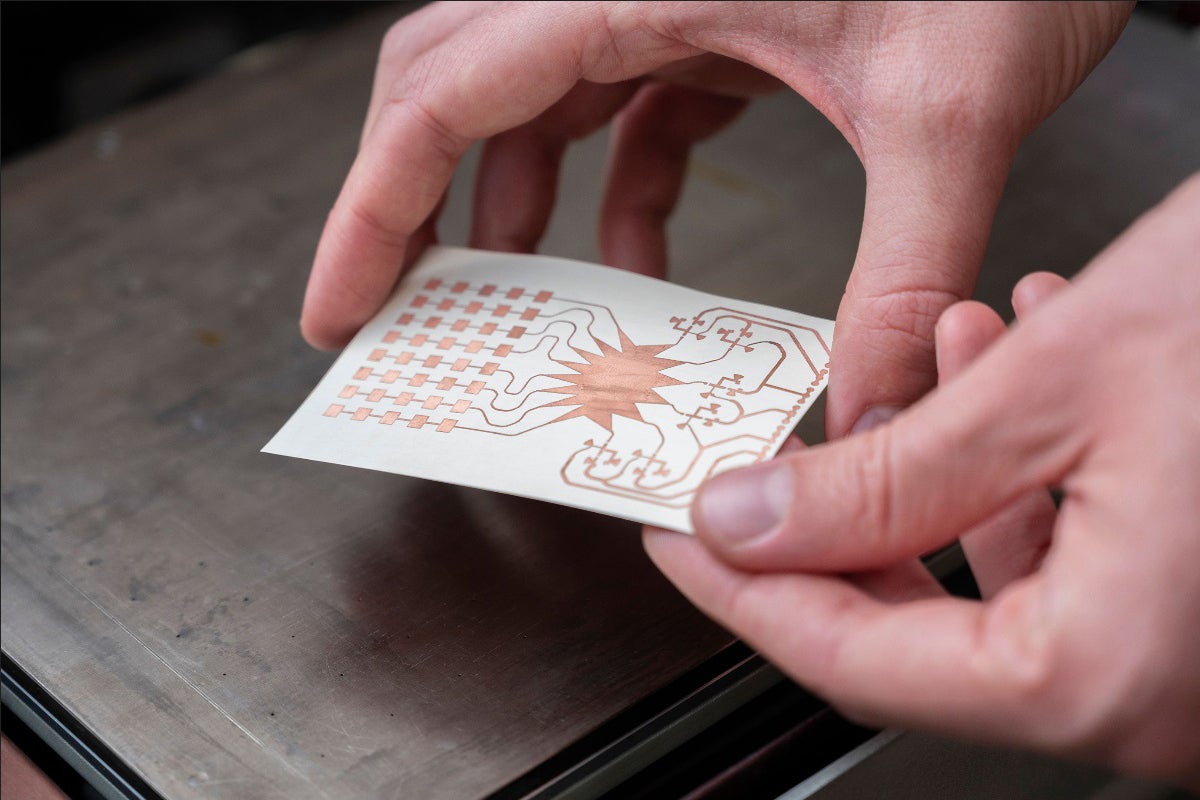- Kali Linux gets a UI refresh, new tools, and an updated car hacking toolset
- How the Sandwich Generation Can Fight Back Against Scams | McAfee Blog
- Buy a Samsung Galaxy Watch 7 on sale and get a free SmartTag2 Bluetooth tracker - here's how
- Cisco capitalizes on Isovalent buy, unveils new load balancer
- I upgraded to Android 16 - here's what I love and what's still missing
5G: mm-wave signals could power self-charging IoT devices

A 3D-printed antenna could turn high-frequency 5G signals into a wireless power source, potentially eliminating the need for batteries in low-power IoT devices, according to researchers at Georgia Tech.
The antenna, which the researchers call a mm-wave harvester, is about the size of a playing card and has visible circuitry printed on it. It uses a technology called a Rotman lens as a waveguide to focus multiple beams of millimeter-wave electromagnetic radiation used in 5G into a coherent whole.
The technology was previously best known as a component of phased-array radar systems, allowing it to see targets in multiple directions without physically moving the antenna system. It was invented in the 1960s by US Air Force and MIT researcher Walter Rotman.
“People have attempted to do energy harvesting at high frequencies like 24 or 35GHz before,” said Aline Eid, a senior researcher a Georgia Tech’s ATHENA lab in the School of Electrical and Computer Engineering. The shortcoming of the previous iterations was it only worked if the lens was oriented directly toward the transmitter. That made it difficult to position correctly and ruled out using it if the device it was powering moved around.
It also helps that millimeter-wave 5G signals are much more energy-dense than previous generations of licensed wireless technology, making them more suitable for energy harvesting.
The Georgia Tech team’s design works more like an optical lens with six simultaneous fields of view, thanks to different curvature angles on the beam-port and antenna sides of the device. This allows the system to map multiple 5G signals at the same time, focusing them on the lens and power rectifiers to transformation the gathered signals into usable electrical energy. The result is that the system can generate 21 times as much power as a non-Rotman-based system, while being relatively simple to produce.
Manos Tentzeris, a professor at Georgia Tech’s School of Electrical and Computer Engineering, said that the forthcoming ubiquity of 5G means that the Rotman lens-based technology could wind up powering huge numbers of IoT devices.
“The fact is 5G is going to be everywhere, especially in urban areas,” he said. The antennas could save a lot of money if IoT devices don’t have batteries that die and need to be swapped out. “You can replace millions, or tens of millions, of batteries of wireless sensors, especially for smart-city and smart-agricultural applications.”
The system isn’t without its drawbacks, however. For one thing, it’s still in the experimental stages, with no data available on when it might become available for commercial use. For another, it’s still quite short-ranged–the experiments centered on a harvesting range of less than three meters, with a theoretical maximum of 16.
Nevertheless, the potential applications for the fast-growing world of IoT are hard to overemphasize. Statista predicts that 5.4 billion IoT devices will be in use by 2025 in North America alone, and with further development of the Georgia Tech system’s effective range, many of them could be powered by 5G signals.
Copyright © 2021 IDG Communications, Inc.

